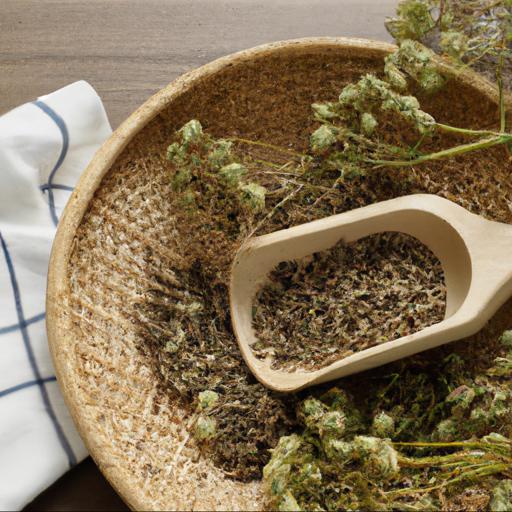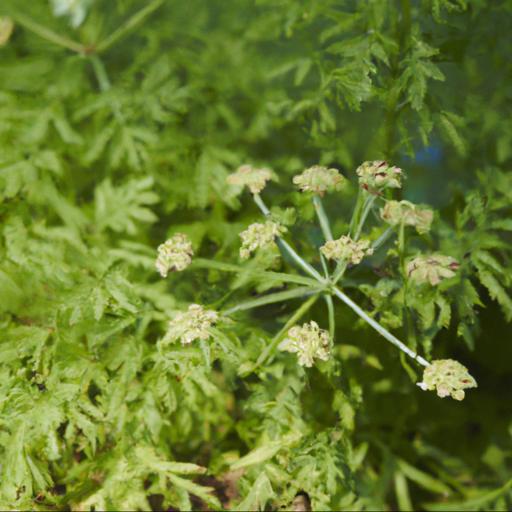Selinum wallichianum, commonly known as Himalayan Parsley, is a species of flowering plant native to the Himalayas. It is a hardy and adaptable plant that is used for both ornamental and medicinal purposes.
The leaves of the plant have a distinctive aroma and are used to flavor curries and other dishes. The plant also has a long history of use in traditional medicine, where it is believed to have a range of health benefits. In this blog, we will explore the benefits of Selinum wallichianum and discuss how it can be used to improve overall health and wellbeing.
Benefits of selinum wallichianum

Selinum wallichianum is a flowering plant that offers the UK garden a wealth of aesthetic and horticultural benefits. Not only does this species provide an aesthetically pleasing backdrop to any garden, but it also has a number of practical benefits that can be utilized to great effect. One of the primary advantages of selinum wallichianum is that it is fast-growing, and due to its ability to reach heights of up to two meters in height will soon provide much needed shelter to your garden.
The foliage of the plant is shaped in a traditional meadowy fashion, meaning that it is able to soften the starkness of modern buildings and provide an aesthetically pleasing contrast to even the ugliest of gardens. In terms of the practical benefits that this species brings to the UK garden, it can be particularly useful for insects and pollinators.
The flowers on the selinum wallichianum are delicate yet prolific, meaning that they are able to attract a huge range of insects and birds. This in turn will ensure a healthy and thriving eco-system in your garden, and can be a great way of ensuring that the environment of your garden remains healthy and balanced. In addition, due to its fast-growing nature, selinum wallichianum can be quickly and easily used as a form of garden clutter control.
All in all, a garden incorporating a selinum wallichianum will not only look aesthetically pleasing, but paves the way for a healthier and more balanced environment within the garden – something that is extremely beneficial for any garden enthusiast. With its fast-growing nature, attractive foliage and multitude of practical benefits, selinum wallichianum is the perfect addition to any UK garden.
How to grow selinum wallichianum

Growing Selinum wallichianum can be both rewarding and challenging for gardeners in Britain. A member of the Apiaceae family, this lavender-blue or white foliage resembles umbrellas and is often used as a filler in flower beds. Selinum wallichianum may look delicate but is actually quite hardy and can thrive in well-drained soil that is kept moist yet not soggy.
When planting, make sure to deadhead the foliage to expand the umbrella effect and promote flowering for a longer period. This can be done by removing the seed heads and leaves when they are in their early stages of development.
To achieve a more aesthetic effect with persistent blooming, soak the soil around the base of the plant with mulch. Mulch also helps in retaining moisture in the ground during the dry season. Despite its hardiness, this species of plant prefers partial sun or sun-dappled shade, as too much direct sunlight can damage the silky foliage.
To ensure that the soil is suitable, it should be checked twice a year to make sure it contains enough nitrogen to help Selinum wallichianum to flourish. Additionally, it’s best to water it in the evening or early morning to ensure that the moisture is not evaporation during the day.
Following these simple steps will ensure that Selinum wallichianum is healthy and hardy for years to come.
Common uses of selinum wallichianum

Selinum wallichianum, commonly known as dill or selino, is an herbaceous plant native to the dry grasslands of Central and South Asia. It’s versatile, easy to grow, and the perfect addition to any home garden.
Here’s how to get the most out of this unique herb. Dill is commonly used in cooking; its seeds and leaves can be dried and ground for use in any number of dishes. Its sweet, pungent flavor comes from its high levels of carvone and limonene, two essential oils.
Its leaves are also an excellent addition to salads, as a garnish, or in herbal teas. The herb has a range of medicinal properties as well.
It is known to have anti-inflammatory and antibacterial properties, making it useful in treating stomach and digestive issues. It can also be used topically to treat minor skin ailments, or as a poultice for swelling or soreness. Lastly, the seeds of Selinum wallichianum can also be used to repel pests.
It’s especially useful for controlling aphids and spider mites in your garden. The seeds also contain a variety of useful nutrients, such as vitamins A and C, iron, and potassium. Furthermore, they are high in protein, making them a great food source for birds.
Clearly, Selinum wallichianum is a versatile and beneficial addition to any garden. Whether you’re looking for a way to spice up your meals or for a natural remedy for common ailments, this unique herb can get the job done.
Give it a try today, and enjoy the many benefits it brings to your life.
Interesting facts about selinum wallichianum
Selinum wallichianum is a fascinating plant species with many unique characteristics, which makes it an exciting addition to any garden. It is a herbaceous perennial native to the Himalayas in India, Bhutan, and Nepal. This beautiful species has various scientific and common names, the most popular being wallich’s selinum, and Indian cow parsley.
It is characterized by stems that produce white umbels with tiny yellow flowers; each flower has five petals and is about 1 cm long. Selinum wallichianum is an ideal choice for gardeners due to its low maintenance.
This hardy species is also quite versatile, as it is shade intolerant, but can also withstand sunny conditions. Furthermore, due to its low water needs and tolerance of low temperatures, it can even survive in arid and cold climates.
Moreover, this species is known for its delicate flavor and smell, which is why it is highly coveted by cooks and gardeners alike. Leaves of the plant are used as a spicy and aromatic garnish or seasoning. Additionally, the leaves and seeds can be used to make soups, teas, and curries.
In conclusion, if you’re looking for an exciting addition to your garden, Selinum wallichianum is the perfect choice. With its beautiful flowers and versatile leaves, it is a great way to bring a unique flavor to your garden.
Not to mention, its low maintenance and tolerance for various climates make it a fantastic option for any gardener.
Bottom Line
Selinum wallichianum, also known as Himalayan wild celery, is a species of flowering plant native to the Himalayan region. It is a herbaceous perennial that grows up to 2 m tall and has large, compound leaves and small, white flowers. The plant is used medicinally for its anti-inflammatory and anti-oxidant properties and is also used as an ornamental plant in gardens.
It is hardy and can tolerate a wide range of temperatures, making it an ideal choice for gardens in colder climates.
FAQ
What is the scientific name of Selinum wallichianum?
The scientific name of Selinum wallichianum is Apiaceae Selinum wallichianum.
What are the medicinal uses of Selinum wallichianum?
Selinum wallichianum has been used in traditional medicine for its anti-inflammatory, anti-bacterial, anti-fungal, anti-diabetic, and anti-cancer properties. It has been used to treat skin diseases, digestive disorders, respiratory problems, and fever. It has also been used to treat liver and kidney diseases, as well as to reduce cholesterol levels.
Where is Selinum wallichianum found?
Selinum wallichianum is found in the Himalayan region of India, Nepal, Bhutan, and Tibet.
What is the chemical composition of Selinum wallichianum?
The chemical composition of Selinum wallichianum includes essential oils, flavonoids, tannins, saponins, and alkaloids.
What are the traditional uses of Selinum wallichianum?
The traditional uses of Selinum wallichianum include treating digestive issues, respiratory problems, and skin disorders. It is also used to reduce inflammation, improve circulation, and boost the immune system.
What are the potential health benefits of Selinum wallichianum?
The potential health benefits of Selinum wallichianum include improved digestion, reduced inflammation, improved cardiovascular health, and improved blood sugar levels. It may also help to protect against certain types of cancer, boost the immune system, and reduce the risk of certain neurological diseases.

